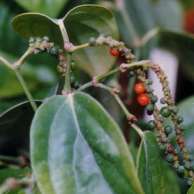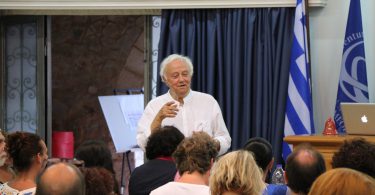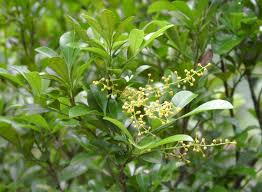
Abstract: Skin diseases are one of the most common diseases of recent time. These diseases are can be cured gently, rapidly and permanently by homoeopathy since the birth of Homoeopathy through individualised approach on the basis of totality of symptoms and miasmatic background of the case of disease, maintaining various laws and principles of the system of medicine without any adverse effect.
Keyword: skin diseases, homoeopathy, miasm, suppression of skin disease, individualisation.
Introduction: Skin is the largest organ of the body1. It is the reflector of internal stress or turmoil of the human.Skin diseases are one of the common burning problems of the society which affecting almost all age group of people not only for the cosmetic value but also for the sufferings by the disease. There are various skin diseases are prevalent in the current time; among them common skin diseases are eczema, tinea and all its variants, scabies, warts, molluscum contagiosum, herpes, vitiligo, psoriatic skin affection, pityriasis, tinea, acne, urticarial, etc. In homoeopathy these cases are likely to be treated very well with satisfied outcomes. In case of treatment of skin diseases with homoeopathy, the miasmatic background of each case of disease is one of the important pillars to individualise the patient and select a perfect simillimum.
Common skin diseases in brief:
- Eczema: Eczema includes various disorders in which inflammation is mainly focused in epidermis. These are atopic dermatitis, seborrheic dermatitis, contact dermatitis, stasis dermatitis etc.
Atopic dermatitis- commonest of this category characteristically very itchy, with the frequent scratching and rubbing resulting simple linear scratch mark, excoriation and chronic thickening of skin mainly affecting face and flexures of joints in child and young adult2.
Seborrheic dermatitis: another common eczematous skin disease characteristically present in the hairy area mainly representing with reddened itchy patches on the affected site scally eruption or exudative and crusted.
Contact dermatitis: It is caused by direct action of toxic substance on the skin (primary irritant dermatitis) or by a substance inducing a delayed hypersensitivity reaction (allergic contact dermatitis); characterised by scally, red, fissured areas commonly affecting the hands and legs.
Stasis dermatitis: This is also known as gravitational eczema or venous eczema; mainly on the lower legs and is the result of chronic venous hypertension and stasis: presented with itchy, scally, dark areas generally associated surrounding venous ulcers3.
- Scabies: It is a skin disease due to the infestation of human scabies mite (Acarus hominis, Sarcoptes scabiei) characterised by violent itching mainly at night and presence of skin lesion like papule, vesicle, burrow most commonly on palm, interdigital areas of finger, the flexure creases etc2.
- Warts: Another very common skin affection is warts which is caused by members of Human papilloma virus family presented with Cauliflower like growth on various parts of our body, generally with no itching and discharge2,3.
- Molluscum contagiosum: It is a common skin infection cause by molluscum contagiosum virus. The skin lesions are skin coloured or glossy pinkish colour umbilicated at the tip of the papular eruption which contain a greyish central plug, most commonly face, genital region of little children are affected3,4.
- Herpes: Another skin disorder due to varicella zoster virus (herpes zoster) and herpes simplex virus (herpes simplex) in the patient mostly above 50 yrs. age or with immune suppressive state. Here the virus has been sitting latent in the posterior root ganglia of spinal cord. Herpes is mostly of two types- Herpes zoster and Herpes simplex. In Herpes zoster appearance of grouped of vesicles with oedema and erythema also with severe pain in a unilateral segmental distribution and in case of Herpes simplex there present of closely grouped vesicles which rapidly formed ulcers or polycyclic erosion covered with white or yellow pseudo-membrane associated with regional lymphadenopathy3.
- Vitiligo: It is a skin disorder where there is focal failure of pigmentation due absence of functional melanocyte by auto-immunological destruction mainly. Characterised by depigmented milky white macular lesion on various parts of skin along with the depigmentation of the hair of that part2,3,4.
- Psoriatic skin affection: Psoriasis is a one of the common inflammatory skin disorders of unknown aetiology characterised by well demarcated, red, raised and scally eruption mainly present at the extensor surface of the limbs, knee, elbow, scalp, palm, sole, etc. If the scales of the eruptions are peel of there is puncted bleeding point on the spot (Auspitz sign), it is one of the diagnostic signs of the disease1,2.
- Pityriasis versicolor: Pityriasis versicolor is caused by Malassezia furfur, a commensal yeast transforms into pathogenic mycelial form which release azelaic acid, which causes hypopigmentation mainly affecting upper trunk, often spreading to neck and deltoid area with fine branny scales and perifollicular macules which is generally no itchy1,2.
- Tinea (Ringworm): Tinea is a very common skin disorder caused by Trichophyton, Microsporon and Epidermophyton species group of dermatophytes presented with annular or arcuate or polycyclic lesion which is spread centrifugally where margin of the lesion is active with papulovesicular eruption, pustule and scaling where centre is comparatively clear. In case of chronic lesion there maybe hyper pigmentation and lichenification present on the site. According to the appearance on the parts of the body, it is classified as- tinea capitis (on scalp), tinea corporis (on trunk and limbs), tinea cruris (on groin), tinea pedis or athlete’s foot (on foot), tinea mannum (on hands), tinea unguium (on nails) etc1,2,3,4.
- Acne: Another very frequent skin disease of skin is acne. Which is of the following mainly classified as-
Acne vulgaris: Acne is a disorder of pilosebaceous unit which predominantly affect pubertal age group people and clinically manifested with polymorphic eruption of the comedones (open or closed), papule, macule, nodule, pustule and cyst which heal with scars2.
Acne Rosacea: It is a chronic inflammatory disorder of skin of the face mainly characterised by telangiectasia with persistent erythema and puncted by acute episodes of papule, pustule and swelling3.
- Urticaria: Urticaria is a one of the most common skin diseases characterised by itchy, red popular eruption of various size that arises suddenly often within a few minutes and last 6-24 hours due to secretion of histamine, leukotrienes and cytokines which are released from mast cells and basophils by several mechanism2.
Miasmatic analysis of skin diseases: Miasmatic analysis of any case of disease and patient is an important pillar of homoeopathic treatment, there is no break of rule in case of skin diseases. According to Dr T. F. Allen most of the skin diseases are either secondary or tertiary state of miasmatic action5.
The psoric skin is dry, rough and unhealthy looking seems as if unwashed. Voluptuous itching and burning are always psoric manifestation but the psoric eruptions are appear with dryness or little suppurative with seropurulent discharge generally and rarely it is bloody. There may appear of thin, little, fine scales on the affected site. In psoric skin affection, degeneration or damage of the skin is not so extensive until it is complicated with syphilis or sycosis, rather it is on the epidermis layer mainly. Aggravation of psoric skin affection in evening, before midnight, heat of the heat of the bed, when undressing6,7.
The syphilitic skin is looks dull, sweaty, moist. There is a tendency to damage of inner tissue involvement and ulceration. The eruptions of syphilitic patient are mainly affecting about the joints and flexure of the body or arranged in circular groupings or segment of circles and there is significant colour like copper or raw ham and brownish or very red at the base. There is no itching and very little soreness present in the syphilitic skin affection. The scale in this type of skin affection is thick and heavy. There will be a tendency to suppuration with thin watery pus along with bloody discharge is of syphilitic nature. The profuse perspiration of the skin makes the skin moist all the time cause affection rawness ulceration in the fold of skin, flexure of joints, etc5,6,7,8.
Next come to the sycotic skin affection which is oily, greasy, shiny appearance with presence of mole, freckles, warty growth and excess of hair on all over the body or a part of body. There is hyper pigmentation of the different part of the body in sycosis7.
In case of pseudo-psora or tubercular state of skin affection, there is a tendency to glandular involvement with skin affection. White speckles on nail are indicative of pseudo-psora.
The pace of appearance of skin symptoms are also indicative of some miasmatic state. In case of slow progression of appearance of symptoms of skin diseases are indicative of sycotic miasm; in case of rapid appearance of symptoms of skin is of syphilitic miasm and also indicative of tubercular state7,8.
In case of injuries of skin rapidly healing with very little or absence of pus is of psoric patient. In case of sycotic patient, there is pus and abscess and their tendency to formation of keloid, hypertrophic scar etc. In case of psoro-syphilitic patient there is also formation of pus and abscesses along with a tendency to glandular involvement of surrounding6,7.
Psoric skin symptoms are aggravated at evening time, from warmth of bed and during winter. Whereas sycotic symptoms are aggravated at morning and during rainy season, cold damp weather and the syphilitic skin affection are aggravated at night and during summer season6.
Some skin diseases and their miasmatic predominance:
- Psoric- Ichthyosis, measle, chicken pox and other infective disease of skin, corn, boil, eczema, anhidrosis, chilblain, paronychia, etc5,6,7.
- Sycotic- Moles, warty growth, eczema exfoliata, lichen planus, abscess, nevus or other congenital markings of skin, tinea, herpes zoster, etc6,7.
- Syphilitic- Ulcerations, gangrene, leprosy, verucca vulgaris, etc7.
- Pseudo-psora- Ringworm, varicose ulcer, herpes, urticaria, hyperhidrosis, impetigo, leprosy, any form of purpura, impetigo, etc.6,7.
- Tri-miasmatic- Psoriasis, skin cancers, erysipelas, lupus, etc7.
Suppression of skin diseases and its consequences on the basis of miasm:
According to Master Samuel Hahnemann, skin diseases suppressed by any means can cause various other grave diseases.
Psoric skin diseases like scabies, etc. are suppressed has produced asthma, convulsions and even death7.
The suppressed pseudo-psoric eruptions produced haemorrhage, spasms, convulsions, coma and death and also produced reflexes of all kind, nervous disorders, asthma, paralysis, stomach and intestinal disorders, catarrhal conditions, chronic cough, etc6,7.
Whereas suppression of sycotic skin diseases can cause malignant growth, especially when psoric trend was marked and tuberculous elements were present then cancer, cardiac diseases like carditis, valvular lesion of heart, etc., epilepsy, apoplexy may can results6,7,8.
Conclusion:
Being one of the most common disease we have to face the patient of skin diseases during our practise frequently. In homoeopathy, the patient is treated as a whole not by the name of the disease. We consider the patient symptom above that those of the disease symptoms where to find a perfect simillimum in order to cure the case considering the totality of symptoms and miasmatic background of the case of disease. Each and every case is treated on the basis of individuality of the patient. As per example in a case of tinea corporis a group of patients are may treated with Sulphur, Thuja occidentalis, Arsenicum album, Nitricum acidum or any other remedy for the same complaint. After the selection of the medicine, we should have to consider the dose and potency of the selected medicine on the basis of laws and principles of homoeopathy as given by our Masters. Another important thing to be always kept in our mind that the patient should be treated with internal medicine only, not by any kind of external application merely or along with the internal medicine. Above all, homoeopathy can cure the skin diseases naturally, permanently, gently and also rapidly.
References:
- Longo DL, Fauci AS, Kasper DL, Hauser SL, Jameson J, Loscalzo J. eds. Harrison’s Principles of Internal Medicine, 17e. New York, NY: McGraw-Hill; 2008, p-308
- Khanna N, Illustrated synopsis of dermatology and sexually transmitted diseases, 6th edition, New Delhi, Elsevier, 2020
- Marks R, Roxburgh’s common skin diseases, International Student’s edition, Chennai, Arnold publishers, 2003
- Allen J. H, Diseases and homoeopathic therapeutics of the skin, 11th impression, New Delhi, B. Jain Publishers, 2016
- Spieght P., A comparison of the chronic miasms (psora, pseudo-psora, syphilis, sycosis), Second edition, New Delhi, B. Jain publishers, 1996
- Hahnemann S, Translated by Tafel Louis H., The Chronic Diseases their peculiar nature & their homoeopathic cure, 18Th impression, New Delhi, B. Jain Publishers, 2019
- Allen JH, The chronic miasm with repertory, Rearrange and augmented edition, New Delhi, B. Jain Publishers, 2007
- Choudhury H, Indication of miasm, New Delhi, B. Jain Publishers, 2005
About Author:
Dr Subhashis Pramanik
(2nd Year Post graduate trainee, Dept. of Case taking and repertory
Mahesh Bhattacharyya Homoeopathic Medical College and Hospital
Dr. B. N. Chakrabarty Sarani, Howrah, West Bengal-711104)
- Dr Swapan Sarkar
(2nd Year Post graduate trainee, Dept. of Homoeopathic Materia Medica
Mahesh Bhattacharyya Homoeopathic Medical College and Hospital
Dr. B. N. Chakrabarty Sarani, Howrah, West Bengal-711104)





